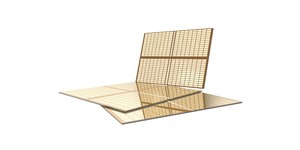
Demand for solid-state drives (SSDs) is on the up, with memory maker Micron claiming that it has seen a 20 per cent rise in orders in the last financial quarter.
The claims of boosted interest in NAND flash-based storage came during the company's regular earnings call, in which Micron's president Mark Adams reported shipments rising 20 per cent in the quarter, with 17 per cent of the company's NAND components going into own-brand solid-state drives - a figure which rises to 35 per cent if you include component sales to other SSD manufacturers.
Adams also confessed that his company has been experiencing some issues with a drop in process size. 'We saw a slowdown in our 20nm ramp related to manufacturing issues,' Adams told press, 'but we still expect production crossover in three to six months. While cheap multi-level cell (MLC) parts account for around 80 to 85 per cent of the company's wafer production, Adams claimed that interest in faster single-level cell (SLC) and tri-level cell (TLC) components are increasing, with the remaining production capacity split evenly between the two.
Not that Micron is resting on its laurels: 'On the NAND technology front, we are making steady technical advancements with both our planar and 3D NAND technologies.' Adams claimed. 'We began sampling our 20nm TLC NAND flash with selected controller companies, and we'll begin production in calendar Q1 [early 2013.]'
Micron's experience in the SSD market is echoed by other manufacturers, who are all reporting increased sales over the last few months. As for the reason why, the boosted interest is likely due to a number of factors: the launch of Windows 8 has slightly increased new system sales and convinced some owners to consider upgrading their machines, while Intel's Ultrabook - and its Windows 8-based hybrid spin-off - project continues to force manufacturers to give up on bulky spinning-platter storage in favour of compact SSD solutions. Price, too, is helping, with the cost to the consumer of a large-capacity SSD continuing to fall even as Micron reports an 8 per cent rise in component costs.
For the DRAM market, the news isn't quite so rosy: pricing for dynamic memory components has been in freefall, and Adams has reported only partial success in pushing prices back up again by reducing production output. According to industry analyst TrendForce, the major DRAM manufacturers - including Micron - will be looking to reduce their capital expenditure budgets by an average of 21 per cent in 2013 with some companies going even further: Samsung, the only company to show a profit in its DRAM arm for the last financial year, has announced a reduction in capital expenditure of 48 per cent year-on-year.
Lowered capital expenditure means lowered research and development budgets, which in turn means that we're unlikely to see any major breakthroughs in the commercial DRAM market until things get back to normal and prices begin to rise once again - or until DRAM-focused companies begin to go bankrupt and supply becomes constrained.
The claims of boosted interest in NAND flash-based storage came during the company's regular earnings call, in which Micron's president Mark Adams reported shipments rising 20 per cent in the quarter, with 17 per cent of the company's NAND components going into own-brand solid-state drives - a figure which rises to 35 per cent if you include component sales to other SSD manufacturers.
Adams also confessed that his company has been experiencing some issues with a drop in process size. 'We saw a slowdown in our 20nm ramp related to manufacturing issues,' Adams told press, 'but we still expect production crossover in three to six months. While cheap multi-level cell (MLC) parts account for around 80 to 85 per cent of the company's wafer production, Adams claimed that interest in faster single-level cell (SLC) and tri-level cell (TLC) components are increasing, with the remaining production capacity split evenly between the two.
Not that Micron is resting on its laurels: 'On the NAND technology front, we are making steady technical advancements with both our planar and 3D NAND technologies.' Adams claimed. 'We began sampling our 20nm TLC NAND flash with selected controller companies, and we'll begin production in calendar Q1 [early 2013.]'
Micron's experience in the SSD market is echoed by other manufacturers, who are all reporting increased sales over the last few months. As for the reason why, the boosted interest is likely due to a number of factors: the launch of Windows 8 has slightly increased new system sales and convinced some owners to consider upgrading their machines, while Intel's Ultrabook - and its Windows 8-based hybrid spin-off - project continues to force manufacturers to give up on bulky spinning-platter storage in favour of compact SSD solutions. Price, too, is helping, with the cost to the consumer of a large-capacity SSD continuing to fall even as Micron reports an 8 per cent rise in component costs.
For the DRAM market, the news isn't quite so rosy: pricing for dynamic memory components has been in freefall, and Adams has reported only partial success in pushing prices back up again by reducing production output. According to industry analyst TrendForce, the major DRAM manufacturers - including Micron - will be looking to reduce their capital expenditure budgets by an average of 21 per cent in 2013 with some companies going even further: Samsung, the only company to show a profit in its DRAM arm for the last financial year, has announced a reduction in capital expenditure of 48 per cent year-on-year.
Lowered capital expenditure means lowered research and development budgets, which in turn means that we're unlikely to see any major breakthroughs in the commercial DRAM market until things get back to normal and prices begin to rise once again - or until DRAM-focused companies begin to go bankrupt and supply becomes constrained.

MSI MPG Velox 100R Chassis Review
October 14 2021 | 15:04








Want to comment? Please log in.